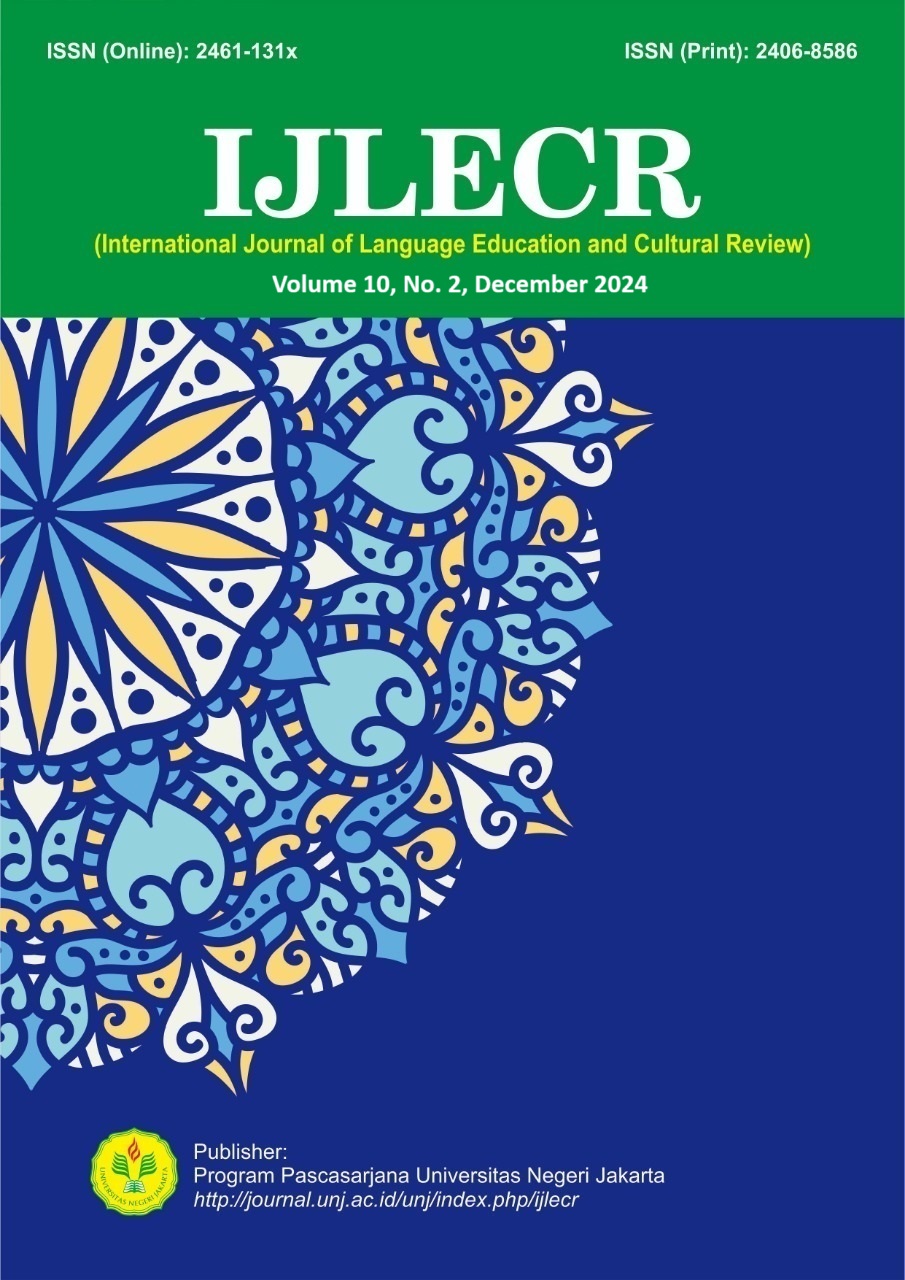Analysis of the Effectiveness of Gamification Elements in Mobile-Based English Learning Applications for Elementary School Students
DOI:
https://doi.org/10.21009/ijlecr.v10i2.49483Kata Kunci:
Gamification, Language Learning, Mobile Applications, Mobile Learning Quadrant, Learning MotivationAbstrak
The limited engagement and motivation of elementary school students in traditional English learning methods present a challenge that mobile-based language learning applications can address. This research examines the gamification elements in three popular mobile-based English learning applications—Duolingo, Busuu, and Simpler—to evaluate their effectiveness in enhancing student motivation and learning outcomes. The study employs a descriptive comparative method, utilizing observation sheets as research instruments to analyze the presence and impact of gamification features such as points, leaderboards, levels, missions, and achievements. Data were analyzed using literature review and document analysis techniques to compare gamification strategies across the applications. The results reveal that Duolingo excels in utilizing gamification features comprehensively, fostering high user engagement through competitive and achievement-driven elements. Busuu integrates gamification with social interaction, emphasizing collaborative learning experiences, while Simpler employs minimal gamification with a focus on simplicity and accessibility. Overall, gamification enhances user motivation and supports language skill development, including reading, writing, speaking, and listening. This study highlights the potential of gamification-based mobile learning to address challenges in traditional education and provide engaging, effective learning experiences tailored to digital-native students.
Referensi
Abdillah, R., & Kurniawan, I. (2021). Tinjauan analisis aplikasi pembelajaran perangkat lunak dari sudut pandang gamifikasi. Indonesian Journal of Education and Humanity, 1(1), 42–48.
Brockmann, T., Zarnekow, R., Robra-Bissantz, S., Lattemann, C., & Stieglitz, S. (2017). Gamification: using game elements in serious contexts. In Progress (pp. 19–29). IS Springer.
Chou, Y. (2019). Actionable gamification: Beyond points, badges, and leaderboards. Packt Publishing Ltd.
Dirksen, J. (2015). Design for how people learn. New Riders.
Gregar, J. (2003). Research design: Qualitative, quantitative and mixed methods approaches.
Hidayat, D. (2021). The Implementation of Gamification system in Asian higher education teaching. Journal of Games, Game Art, and Gamification, 2(1). https://doi.org/10.21512/jggag.v2i1.7218
Hooker, C. (2016). Mobile Learning Mindset: The Prinicipal’s Guide to Implementation: The Prinicipal’s Guide to Implementation. International Society for Technology in Education.
Hunicke, R., LeBlanc, M., & Zubek, R. (2004). MDA: A formal approach to game design and game research. Proceedings of the AAAI Workshop on Challenges in Game AI, 4(1), 1722.
Jasni, S. R., Zailani, S., & Zainal, H. (2018). Pendekatan gamifikasi dalam pembelajaran bahasa Arab: Gamification Approach in learning Arabic language. Journal of Fatwa Management and Research, 358–367.
Jayawardana, H. B. A. (2017). Paradigma pembelajaran biologi di era digital. Jurnal Bioedukatika, 5(1), 12–17.
Lutfina, E., Setiawan, R. O. C., Nugroho, A., & Abdillah, M. Z. (2023). Perancangan aplikasi pembelajaran dengan konsep gamifikasi: Systematic literature review. Methomika: Jurnal Manajemen Informatika & Komputerisasi Akuntansi, 7(1), 78–87.
Narbuko, C., & Ahmadi, H. A. (2002). Metologi penelitian. Jakarta: Bumi Aksara.
Quinn, C. N. (2011). The mobile academy: Learning for higher education. John Wiley & Sons.
Rismayanti, I., Bakhraeni, R., & Natalina, D. (2015). Hands on dalam pembelajaran di sekolah dasar. PEDADIDAKTIKA: Jurnal Ilmiah Pendidikan Guru Sekolah Dasar, 2(1), 108–117.
Setiyawan, M., Winarno, W. W., & Sunyoto, A. (2019). Implementasi gamification pada aplikasi perkuliahan mahasiswa dengan metode feature driven development (Studi kasus: AMIK Cipta Darma Surakarta). Jurnal Ilmiah IT CIDA, 5(1). https://doi.org/10.55635/jic.v5i1.87
Sobrino-Duque, R., Martínez-Rojo, N., Carrillo-de-Gea, J. M., López-Jiménez, J. J., Nicolás, J., & Fernández-Alemán, J. L. (2022). Evaluating a gamification proposal for learning usability heuristics: Heureka. International Journal of Human-Computer Studies, 161, 102774.
Sufyadi, S., Lambas, L., Rosdiana, T., Rochim, F. N., Novrika, S., Iswoyo, S., & Mahardhika, R. L. (2021). Panduan pembelajaran dan asesmen jenjang pendidikan dasar dan menengah (SD/MI, SMP/MTs, SMA/SMK. MA). Jakarta: Kementerian Pendidikan, Kebudayaan, Riset, Dan Teknologi.
Sugiyono, D. (2013). Metode penelitian pendidikan pendekatan kuantitatif, kualitatif dan R&D. Bandung: Alfabeta.
Warsita, B. (2010). Mobile learning sebagai model pembelajaran yang efektif dan inovatif. Jurnal Teknodik, 62–73.
Wibowo, R. P., & Romdhoni, F. H. (2015). Purwarupa aplikasi pembelajaran sql interaktif berbasis web dengan penerapan gamification. Sisfo, 05(03). https://doi.org/10.24089/j.sisfo.2015.03.018
Winans, M. D. (2020). Busuu-A social network application to learn languages. CALICO Journal, 37(1), 117–126.
Wirawan, R., Nur, M. A., & Syahraeni, R. (2020). Aplikasi pembelajaran matematika interaktif berbasis multimedia. Jurnal Riset Teknologi Dan Inovasi Pendidikan (Jartika), 3(1), 75–83.








